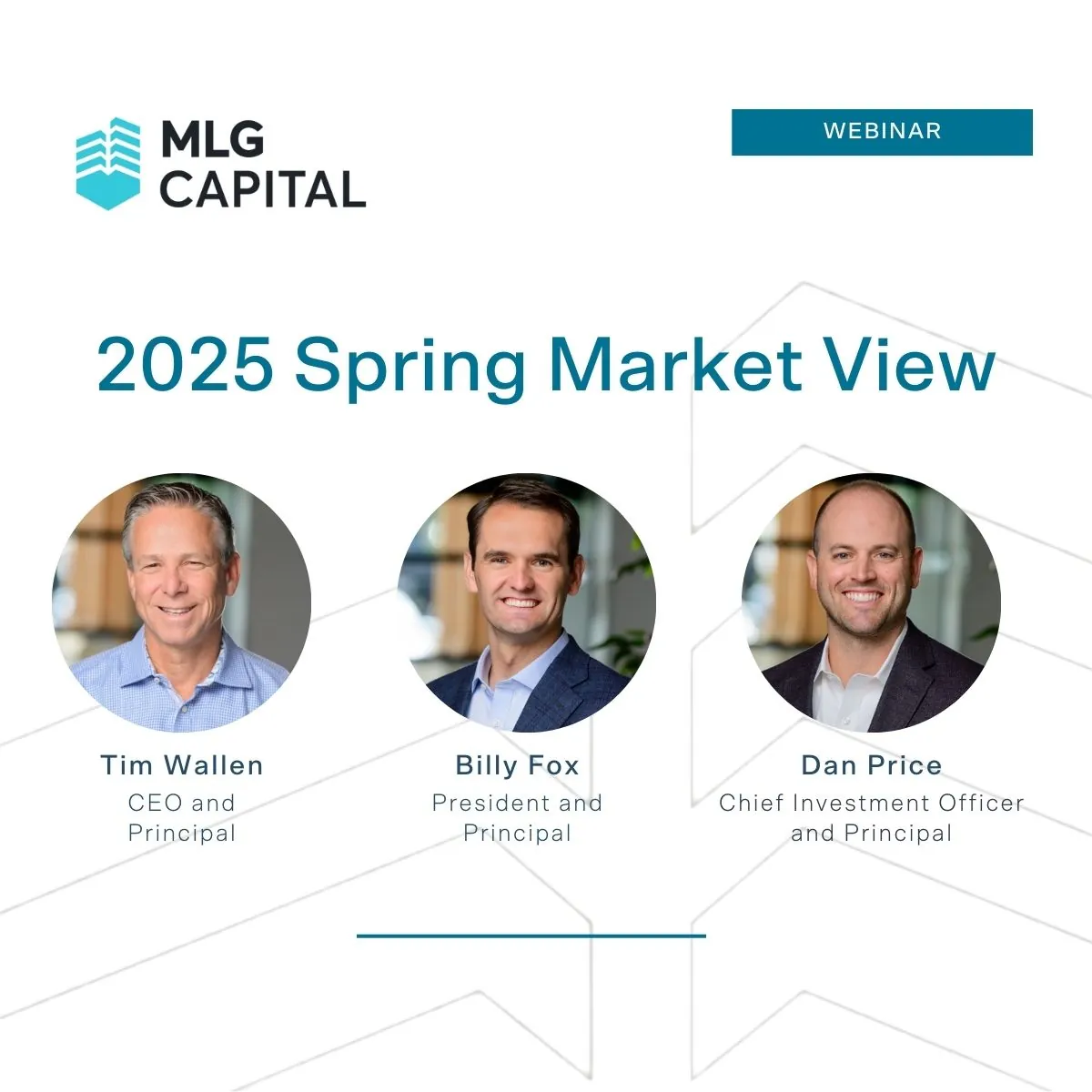Investing in Real Estate for Medical Doctors
For more than 38 years, our core focus has been preserving our investors’ wealth and producing exceptional income and appreciation over time through investment in commercial real estate. In partnership with Passive Income MD, we’re excited to be your guide through commercial real estate investment.
PORTAL LOGINInvest with MLG Capital Today.
Why Invest with Us?
Our funds provide access to real estate investment opportunities thoroughly reviewed and vetted by our analyst teams and over 38 years of real estate knowledge. Our offerings include our Private Funds (both Private Funds and Dividend Funds) and our newest investment vehicle, the MLG Legacy Fund.
-
Diversification
Our funds invest in multiple asset types, states and with different real estate managers. Private Funds target 25-30 investments.
-
Prioritized Returns
In our Private Funds, investors accrue an 8% cumulative preferred return on invested equity, paid quarterly from available cash flow, then receive 100% return of initial investment before we share in any profits5.
-
Tax Efficiency
We wrap quality tax planning around our transactions. Our team utilizes a range of sophisticated strategies targeted to address tax burden and maximize after-tax cash flow.
Track Record of Success
For over 38 years, MLG Capital has owned and operated real estate while successfully managing through multiple economic cycles. We’re excited to offer members of Passive Income MD a way to diversify their investment portfolio to include real estate.
About MLG CapitalInvestment Model
The Private Fund investment model is structured to put our investors returns first. 100% of available distributions are paid to investors as follows5:
- TIER ONE 8 % Cumulative Preferred Return on Invested Equity
- TIER TWO 100 % Return of Original Principal Invested after the 8% Preferred Return
- TIER THREE 75% / 25% Profit Sharing Split of Remaining Cash Flow Distributions after return of original principal
- Quarterly Distributions Paid
- 1.25 % Asset Management Fee on Invested Capital
Which Fund Option Works for You?
MLG Private Fund VI LLC and MLG Dividend Fund VI LLC (together, the “Fund”) will invest side-by-side in each investment. Each have their respective attributes and have the same overall pre-tax investment objectives. Which one you invest in will depend on your personal financial situation. Learn More.
- Overview
-
MLG Private Funds
A continuation of our historic fund model. Investors will realize rental income produced from fund operations. -
MLG Dividend Funds
A great opportunity for a retirement account (IRA, 401k, etc.), Foundation and Endowment investors seeking dividend income.
- Unrelated Business Taxable Income
- YES
- NO
- Multi-State Tax Filling
- YES
- NO
- Use Passive Activity Losses
- YES
- NO
- Schedule K-1
- YES
- YES
- Common Income Types
- Capital Gain and Net Rental Income (Loss)
- Capital Gain, Ordinary REIT Dividends
How We Acquire Property
MLG has developed a dual-sourcing deal flow strategy to create opportunities regardless of market cycle. Historically, MLG has been able to source ±100 transactions per month, giving us the ability to be highly selective in our review process. We target 1-2 acquisitions per month, on average.
Joint Venture (JV)
We have established numerous partnerships across the nation from which we seek real estate investment opportunities, allowing us to capitalize on local knowledge and relationships to find deals. The joint venture acquisition strategy is focused on finding real estate in positive economic markets with job and population growth.
Key Relationships: Foster relationships with local real estate partners.
Diversity: By geographic, asset type and partner/sponsor.
Deal Flow: Critical selection of the smartest investments possible.
Direct Acquisitions
This acquisition strategy falls within target asset classes (i.e., apartments, industrial, retail and office) and includes states where MLG is located, or a state where we have long-established and historical relationships.
35+ Years Experience: Acquisitions and relationships are time tested and proven.
Local Staff: Ability to manage with “boots on the ground.”
Reach: Owning and operating multiple properties within a given MSA.
Primary Contact
Nathan Clayberg, Vice PresidentNathan is the main point of contact for the Passive Income MD group. Nathan spends his time at MLG Capital working with many prospective and current investors and also oversees joint venture acquisitions in the Midwest. Please book a call with Nathan below.
Schedule a Call with Nathan
Investment Insights to Keep You Ahead
EXPLORE MORE INSIGHTS-
Thought LeadershipREAD MORE
What the Enacted Tax Bill Could Mean for Real Estate and MLG Investors in 2025
-
Thought LeadershipREAD MORE
Market View 2025: MLG Capital’s Strategic Outlook for Private Real Estate
Each year, MLG Capital issues its Market View commentary to offer a clear, data– driven perspective on the state of the private commercial real estate market. In Spring 2025, CEO Tim Wallen, President Billy Fox, and CIO Dan Price convened to discuss market trends and where they see opportunity in the market today. The following highlights from our 2025 Market View discussion explore where we see risk, where we see resilience, and why we are actively deploying capital in the current environment. Key Themes from the Spring 2025 Market View Discussion Soft net operating income (NOI) is creating tactical entry points, not permanent impairments. Operating income across multifamily assets has come under short–term pressure due to record supply deliveries in 2023 and 2024, particularly in high-growth markets such as the Sunbelt. This temporary imbalance has generally reduced occupancies, flattened rent growth, and increased concessions. MLG views this softness not as structural deterioration, but as a cyclical occurrence that is already beginning to normalize in select markets. As operational performance recovers, assets acquired during this window may benefit from meaningful NOI growth over the mid– to long–term. The supply and demand imbalance is correcting and setting the stage for future…
-
Investment OptionsREAD MORE
How Investors are Paid: MLG’s Private Fund Return Structure
The series of MLG Private Funds provides investors with access to investment opportunities that aim to produce tax-advantaged cash flow and appreciation over time. The Funds focus on growing investors’ wealth, capital preservation and diversification within private real estate investment. Understanding how and when returns are sent to investors is perhaps one of the most important elements of any investment structure. Within the private markets, there are a myriad of different structures that may exist. These structures can be frequently misunderstood. Our Funds utilize a “European equity waterfall return structure”. This is specifically designed to be an investor friendly return structure. This demonstrates our firm’s commitment to investors and our confidence in our ability to execute. MLG Private Funds Return Structure: Each of our private real estate funds utilizes a three-tiered return structure. 100% of available distributions are paid to investors as follows1; (Tier 1) 8% cumulative preferred return on invested equity (Tier 2) 100% return of original principal invested, after a full 8% cumulative preferred return is paid (Tier 3) 70/30 profit sharing split (Investors/MLG) of remaining cash flow distributions after full 8% and 100% return of original principal Subject to available cash flow, each fund makes distributions…


